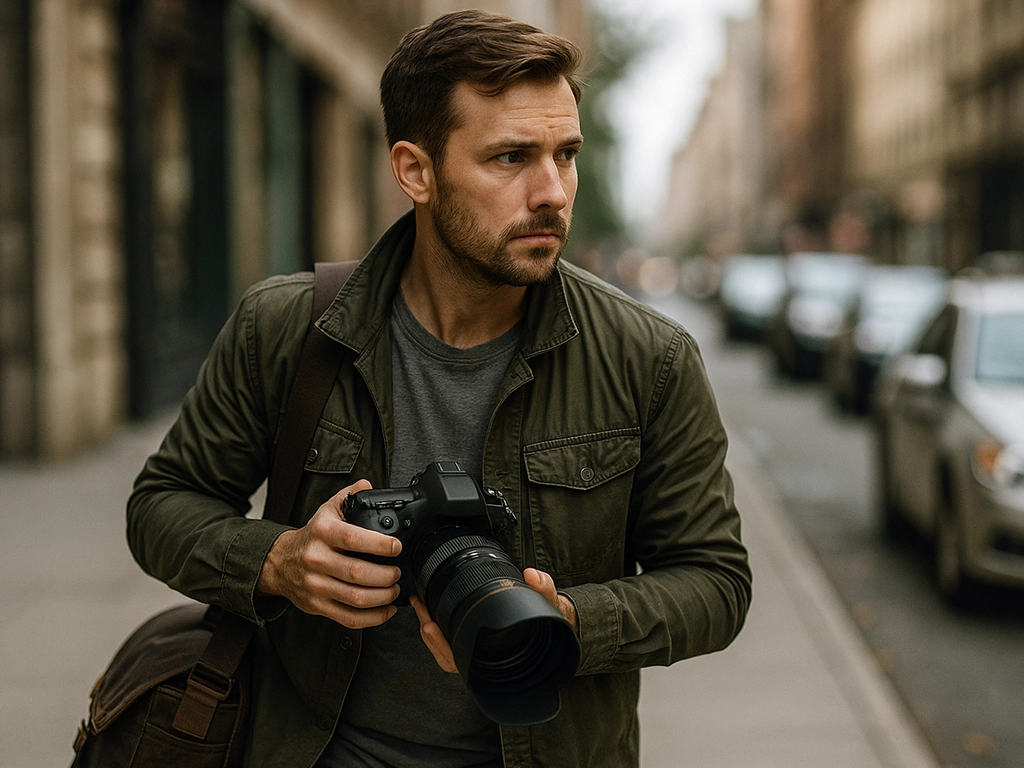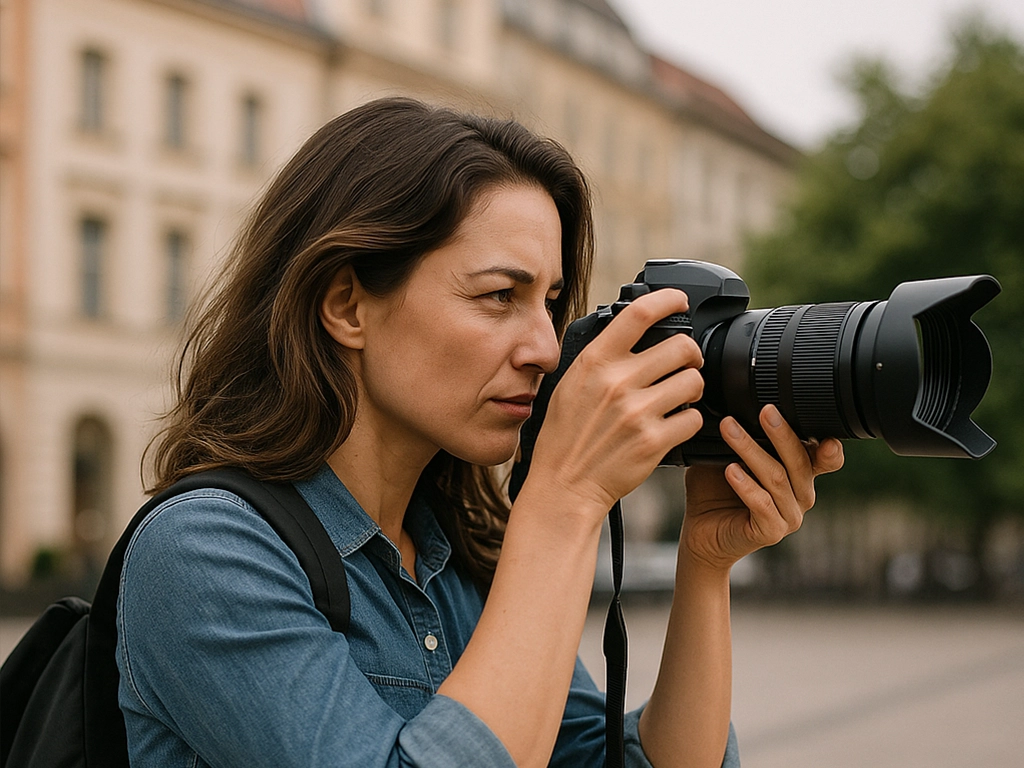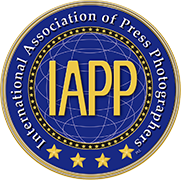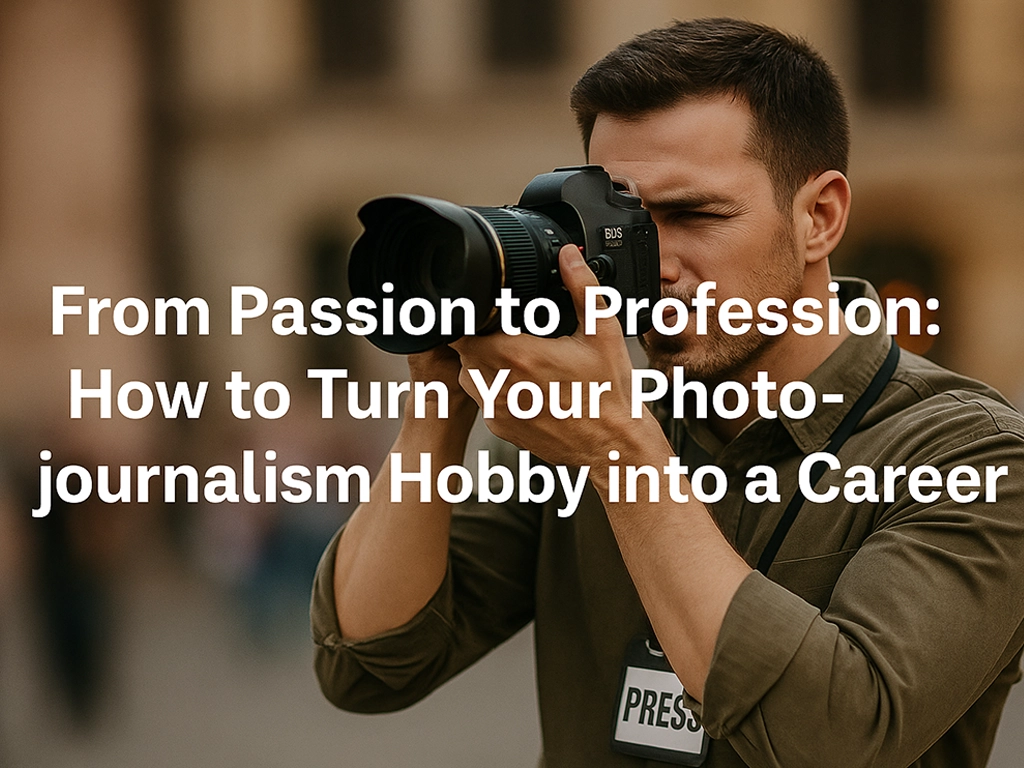The journey from hobbyist to professional photojournalist is both exciting and challenging. For many, photography begins as a passion – a love for capturing moments, telling visual stories, and documenting life as it happens. But making a career out of photojournalism requires more than talent behind the lens. It demands strategy, education, consistency, networking, and a deep understanding of the industry.
This comprehensive guide provides aspiring press photographers and visual storytellers with a roadmap to transform their creative hobby into a full-time, sustainable profession. From building your portfolio to finding clients, and from legal considerations to international accreditation, we’ll cover each essential step. Whether you’re just getting started or seeking to go all-in, this article will show you what it takes – and how the International Association of Press Photographers (IAPP) can help accelerate your journey.
1. Understanding What It Means to Be a Photojournalist
Photojournalism goes beyond aesthetics. It’s about capturing truth, context, and emotion in a way that informs and engages the public. Unlike commercial or artistic photography, photojournalism serves a public interest. It’s rooted in ethics, timing, and narrative.
Professional photojournalists must learn to:
- Work under pressure and in unpredictable environments.
- Understand news values: timeliness, impact, proximity, prominence, and novelty.
- Develop an editorial eye and visual consistency.
- Build trust with subjects and audiences.
Passion is the spark, but responsibility is the framework.

2. Build a Portfolio with Purpose
Your portfolio is your visual resume. It tells editors, clients, and agencies who you are, what you shoot, and how well you tell a story. Don’t wait to be commissioned – start by documenting what’s around you.
Focus on:
- Narrative depth: Choose series over standalone shots.
- Diversity of content: Cover events, human interest stories, environmental issues.
- Technical competence: Sharpness, exposure, color balance.
- Captioning and metadata: Add context to every image.
Publish your work in personal galleries, on social media, and submit to photo contests and online platforms. IAPP members can also showcase their work in official exhibitions and features.
3.Learn the Craft: Education and Mentorship
While formal education is not mandatory, understanding the principles of journalism, ethics, and documentary storytelling is critical. Consider:
- Online courses (e.g. from platforms like Coursera, NPPA, Magnum)
- University photography or journalism programs
- Workshops, internships, and local press mentorships
- IAPP resources: access to webinars, industry guidelines, and expert-led sessions
Learning from others accelerates your progress, helps you avoid mistakes, and opens doors to new techniques and ideas.
4. Invest in Equipment That Works for You
You don’t need the most expensive gear – but you do need reliable tools. Your camera should be fast, durable, and capable of high-quality output in varied light. Lenses should match your subjects: wide-angle for protests or conflict zones, telephoto for sports and nature.
Recommended gear:
- DSLR or mirrorless camera (Canon R6, Sony A7, Nikon Z6, etc.)
- 24–70mm and 70–200mm lenses
- Spare batteries, fast memory cards, backup drive
- Protective gear: weather covers, padded bags
- Smartphone with good video capabilities for quick uploads
Know your equipment inside out. In the field, seconds matter.

5. Master the Art of Storytelling
Photojournalism is not just about capturing beautiful images. It’s about telling powerful stories. Great photojournalists:
- Understand character and setting
- Use sequencing to guide viewers
- Balance emotion and information
- Frame moments with purpose
Build personal projects around social issues or untold stories in your community. This not only hones your storytelling skills but gives you something unique to pitch.
6. Understand Your Legal Rights and Responsibilities
As a professional, you need to know:
- When and where you can legally shoot
- How to obtain press credentials
- The difference between editorial and commercial use
- How to get model or property releases (if needed)
- Copyright laws and licensing models
IAPP provides members with internationally recognized press ID cards, letters of assignment, and access to legal information tailored to media professionals.
7. Finding Work and Getting Published
There are various ways to begin a career in professional photojournalism:
Freelancing: Pitching to media outlets, NGOs, and agencies
Wire services: Getty, Reuters, AP, Zuma, etc.
Local media: Newspapers, community journals, radio/TV stations
Institutional clients: Humanitarian organizations, universities, think tanks
To be published:
- Identify publications and review their style
- Submit concise pitches with a small, focused image selection
- Maintain persistence and professionalism in follow-ups
The IAPP directory and network can connect professionals with potential employers and editors internationally.
8. Monetizing Skills
Photojournalists may generate income through:
- Licensing images to stock sites
- Selling fine art prints
- Teaching workshops or courses
- Crowdfunding long-term projects
- Developing a Patreon or paid newsletter
A diversified approach to income can increase business stability.
9. Networking and Building Reputation
Professional relationships play an important role. Activities may include attending journalism conferences, participating in exhibitions, or engaging online.
- Join online communities such as IAPP, NPPA, Lightstalkers
- Use platforms such as LinkedIn and Instagram for professional purposes
- Seek feedback from experienced editors and mentors
Networking can lead to collaborative projects, employment opportunities, and increased visibility. IAPP provides members with access to community support, mentorship, and exposure.
10. Resilience: Mental Health and Ethics
The field can be challenging, especially when documenting conflict, poverty, or natural disasters. It is recommended to set boundaries, recognize burnout, and seek assistance when needed. The IAPP offers ethical guidelines, expert sessions, and peer support for self-care.
For ethical storytelling:
- Obtain consent where possible
- Avoid sensationalism
- Credit collaborators
- Fact-check before publishing
Maintaining credibility is essential in the profession.
11. IAPP’s Role in Career Development
The International Association of Press Photographers offers a range of resources for professionals. Membership includes:
Press credentials: Recognized globally for increased access and legitimacy
Training: On-demand learning, mentorship, and expert panels
Portfolio visibility: Opportunities for exhibition and inclusion in directories
Job board and pitching support
Legal and ethical resources
With over 20 years of experience supporting photojournalists, IAPP provides resources for career advancement.
Conclusion
Transforming your photography hobby into a professional photojournalism career is a journey that blends skill, purpose, and strategy. You’ll need to hone your storytelling abilities, build a portfolio, stay legally informed, market yourself, and remain emotionally resilient.
The good news? You don’t have to do it alone. With the support of organizations like IAPP and a clear roadmap, your passion for photography can evolve into a powerful, purpose-driven career.
Start documenting your world – and sharing it with the one beyond your lens.

